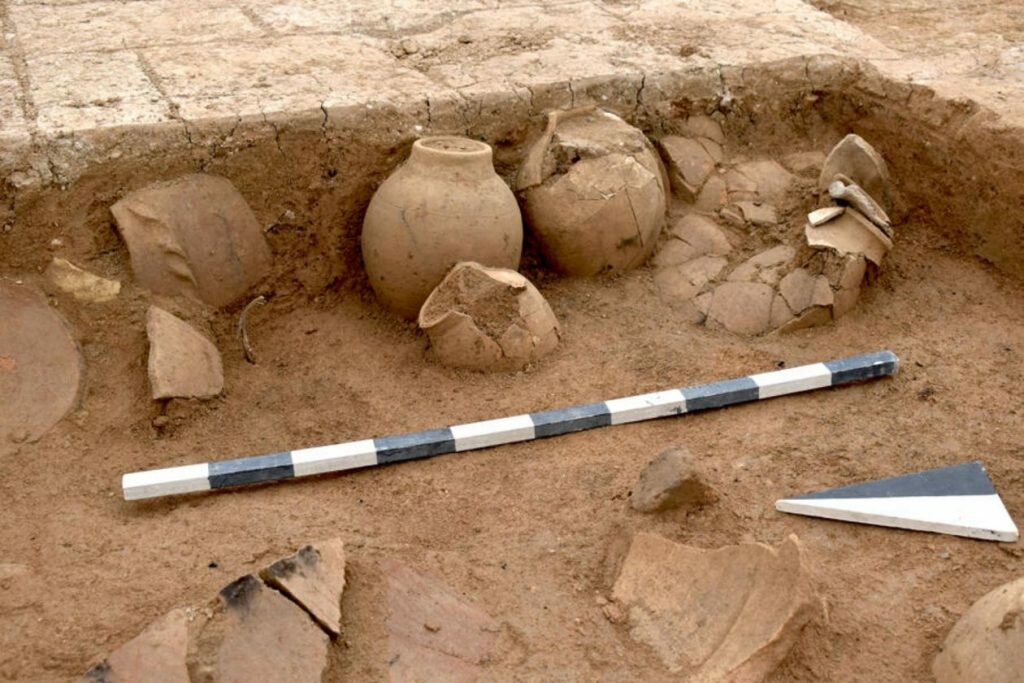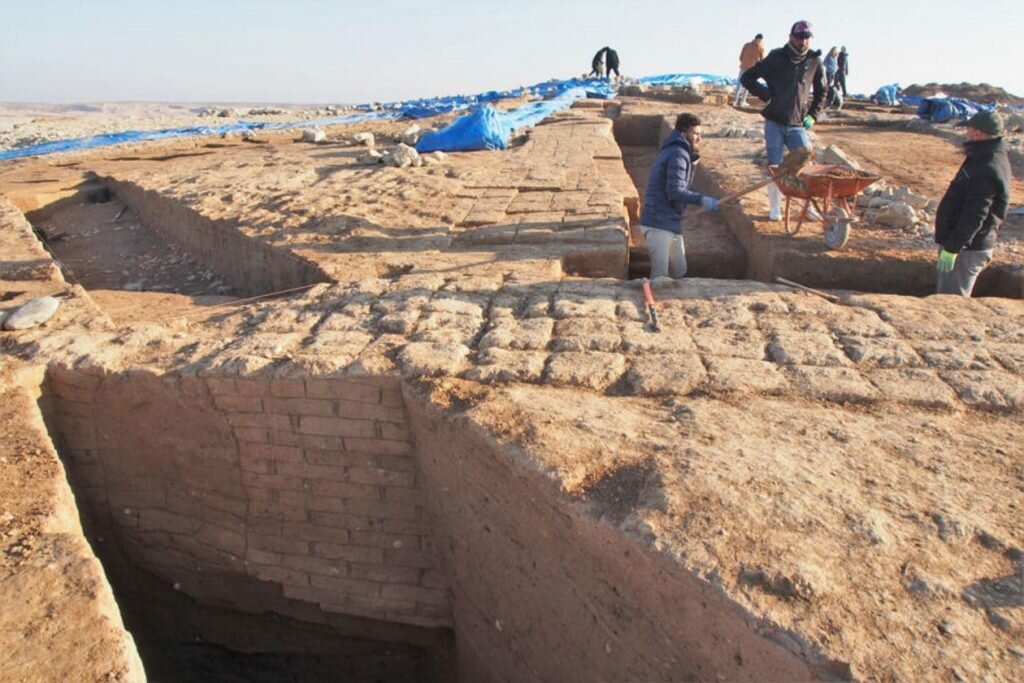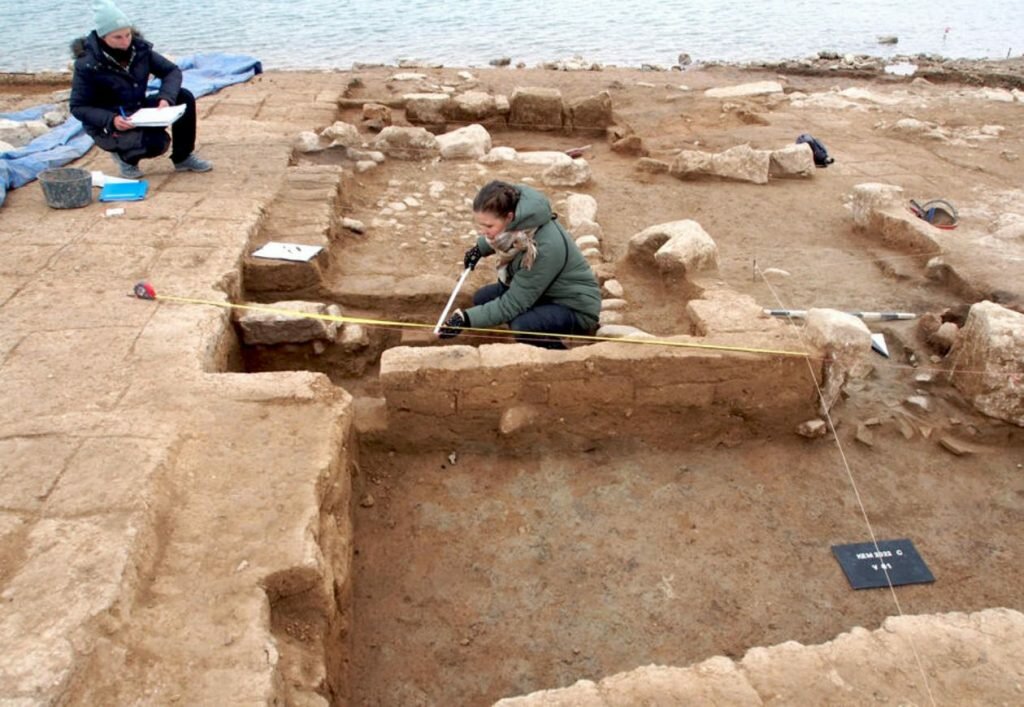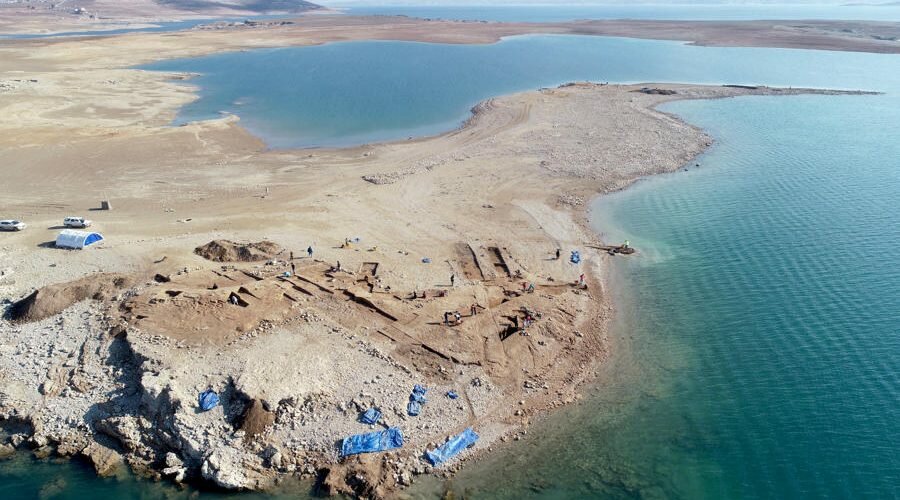As waters and ice recede under warming conditions, the traces of people and civilizations long gone from the mortal realm emerge.
Recently, A team of German and Kurdish archaeologists have uncovered a 3400-year-old Mittani Empire-era city once located on the Tigris River.
The settlement emerged from the waters of the Mosul reservoir early this year as water levels fell rapidly due to extreme drought in Iraq. The extensive city with a palace and several large buildings could be ancient Zakhiku – believed to have been an important center in the Mittani Empire (ca. 1550-1350 BC).
This isn’t the first time that the city has risen from the waters like a lost Atlantis. In 2018, the dam receded enough to give archaeologists a brief window in which to discover and document the ruins, before the water level rose and covered them again.
So, in December of 2021, when the city began to emerge once more, archaeologists were ready to leap in and take advantage of the second brief window.
In January and February of this year, archaeologist Hasan Ahmed Qasim from the Kurdistan Archaeology Organization in Iraq, along with fellow researchers Ivana Puljiz of the University of Freiburg and Peter Pfälzner from the University of Tübingen in Germany, set about mapping the mysterious city.
“The huge magazine building is of particular importance because enormous quantities of goods must have been stored in it, probably brought from all over the region,” says Ivana Puljiz.


The research team was stunned by the well-preserved state of the walls – sometimes to a height of several meters – despite the fact that the walls are made of sun-dried mud bricks and were under water for more than 40 years. This good preservation is due to the fact that the city was destroyed in an earthquake around 1350 BC, during which the collapsing upper parts of the walls buried the buildings.
Fascinatingly, the city also yielded some ceramic jars containing over 100 unfired clay tablets inscribed in cuneiform, dating to the Middle Assyrian, shortly after the earthquake.


The team hopes that these records might contain some information about who lived in the city, and maybe even about the earthquake itself that led to its demise.
“It is close to a miracle that cuneiform tablets made of unfired clay survived so many decades underwater,” Pfälzner said.
The dam has since been refilled, submerging the city once more, but steps have been taken to make sure that it will be preserved for future excavations, when the water recedes once more. The ruins have been sealed under plastic coverings that will prevent future erosion and degradation in the years ahead.
In the meantime, the frenzied work has given the archaeologists material to study that may shed light on the lives of the ancient Mittani who lived in the once-great city.
Hasan Qasim concludes, “The excavation results show that the site was an important center in the Mittani Empire.”
Sources:

